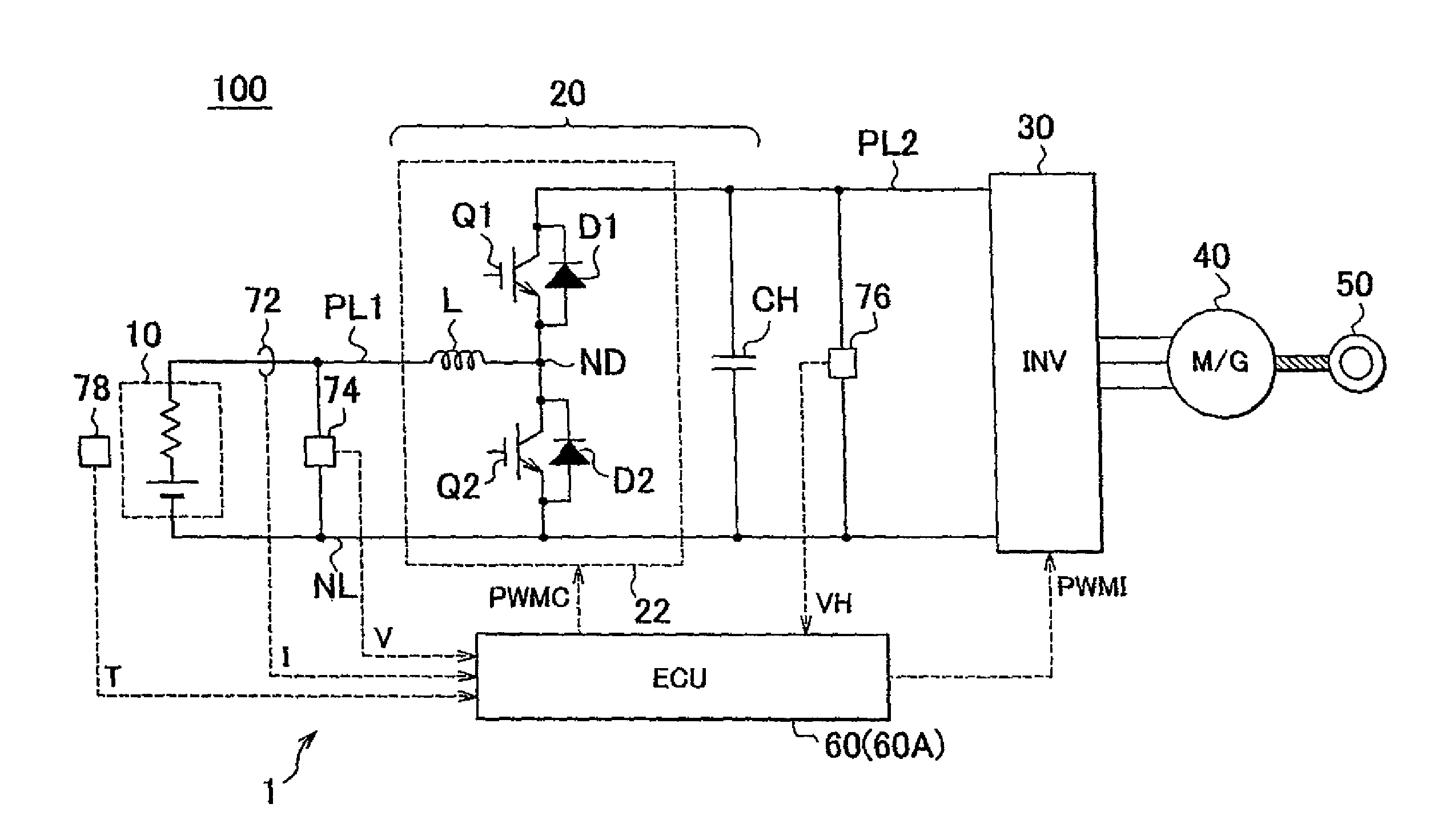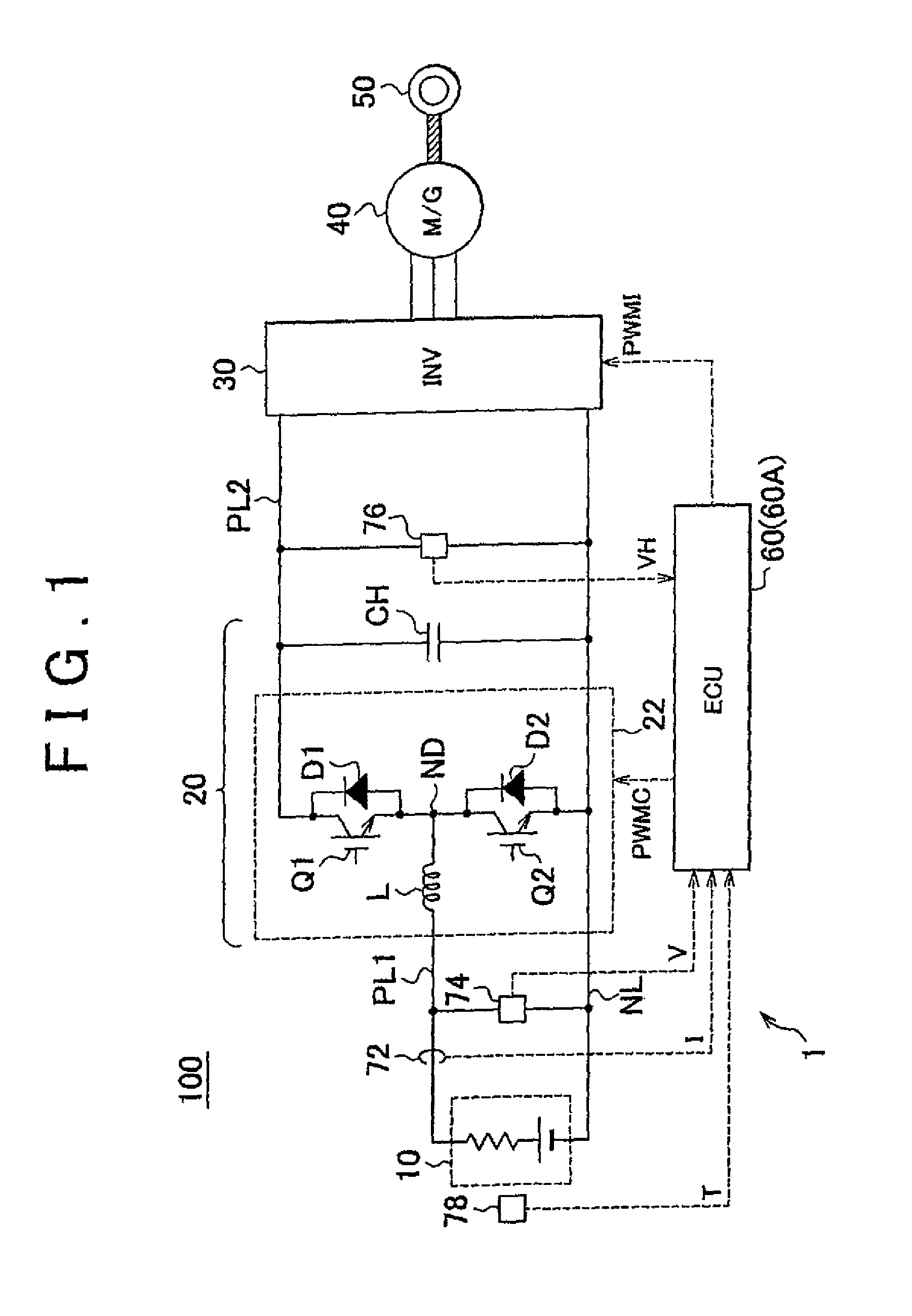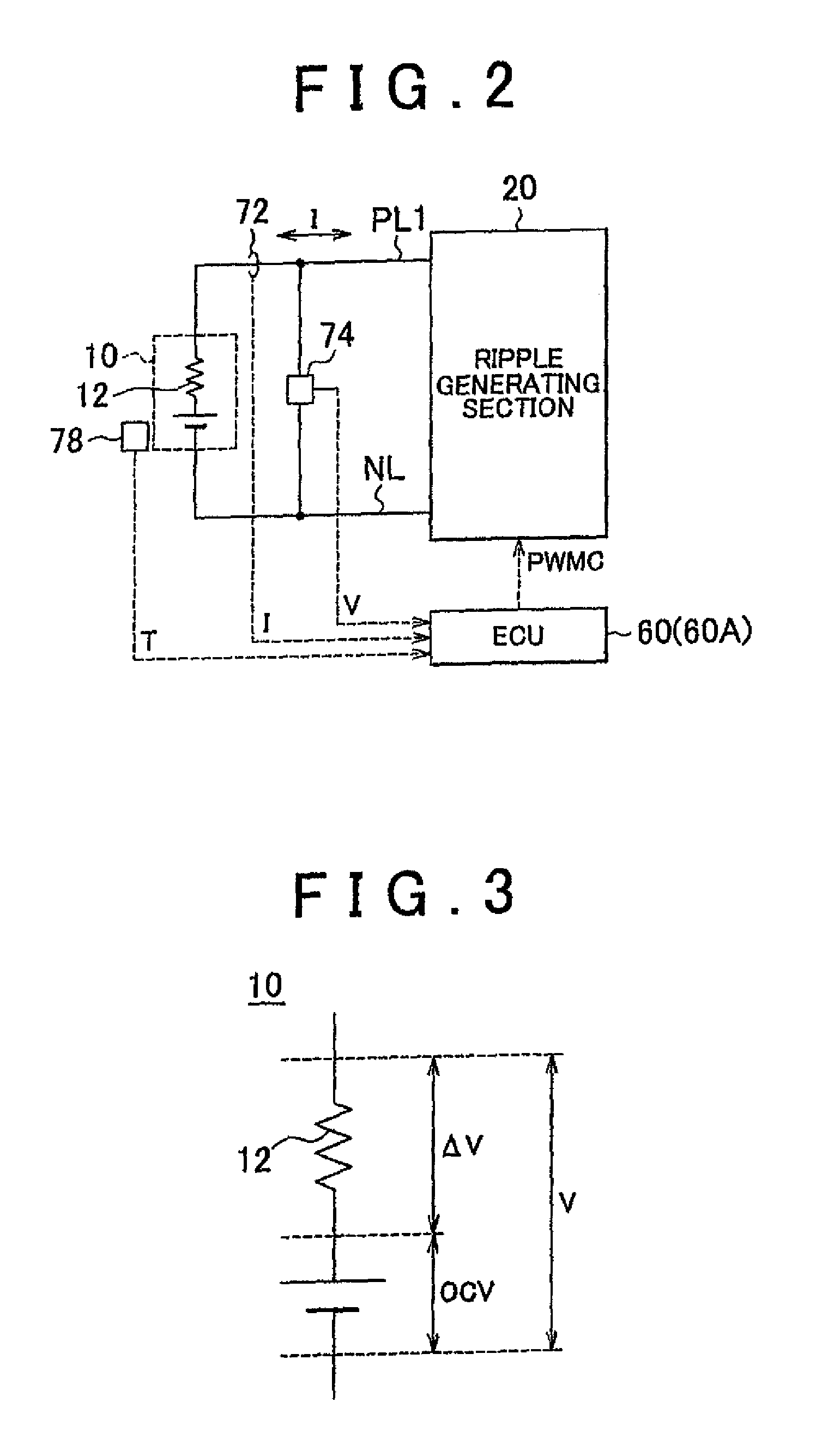Secondary battery temperature-increasing control apparatus and vehicle including the same, and secondary battery temperature-increasing control method
a control apparatus and battery technology, applied in battery/fuel cell control arrangement, electric devices, instruments, etc., can solve the problem of significantly affecting the amount of heat generated in the battery, and achieve the effect of efficiently generating a target amoun
- Summary
- Abstract
- Description
- Claims
- Application Information
AI Technical Summary
Benefits of technology
Problems solved by technology
Method used
Image
Examples
first embodiment
(First Embodiment)
[0037]FIG. 1 is a block diagram of the whole of an electric vehicle that is given as an application example of a secondary battery temperature-increasing control apparatus 1 according to a first embodiment of the invention. Referring to FIG. 1, the electric vehicle 100 includes the secondary battery 10, a boost converter 22, a capacitor CH, an inverter 30, a motor generator 40, and a driving wheel 50. The electric vehicle 100 further includes an electronic control unit (ECU) 60, an electric current sensor 72, voltage sensors 74 and 76, and a temperature sensor 78.
[0038]The secondary battery 10 is a rechargeable battery, typified by a lithium ion battery or a nickel-hydrogen battery. A positive terminal and a negative terminal of the secondary battery 10 are connected to a positive line PL1 and a negative line NL, respectively.
[0039]The boost converter 22 includes power semiconductor switching devices (hereinafter also referred to merely as “the switching devices”) ...
second embodiment
(Second Embodiment)
[0096]In the above first embodiment, the ripple current is controlled to be brought to the target by changing the carrier frequency (ripple frequency) of the boost converter 22. In a second embodiment, the ripple current is controlled by adjusting the boost ratio of the boost converter 22 (that is, by adjusting the switching duty factors of the switching devices Q1 and Q2).
[0097]An overall configuration of an electric vehicle, in which a secondary battery temperature-increasing control apparatus according to the second embodiment is used, is the same as that of the electric vehicle 100 shown in FIG. 1.
[0098]FIG. 11 is a functional block diagram of part of the ECU 60A of the second embodiment, the part relating to the control of the boost converter 22. Referring to FIG. 11, the ECU 60A includes a duty command generating section 114A, a ripple temperature increase FB control section 118A, and a carrier generating section 122A, instead of the duty command generating ...
PUM
| Property | Measurement | Unit |
|---|---|---|
| power factor | aaaaa | aaaaa |
| frequency | aaaaa | aaaaa |
| temperature | aaaaa | aaaaa |
Abstract
Description
Claims
Application Information
 Login to View More
Login to View More - R&D
- Intellectual Property
- Life Sciences
- Materials
- Tech Scout
- Unparalleled Data Quality
- Higher Quality Content
- 60% Fewer Hallucinations
Browse by: Latest US Patents, China's latest patents, Technical Efficacy Thesaurus, Application Domain, Technology Topic, Popular Technical Reports.
© 2025 PatSnap. All rights reserved.Legal|Privacy policy|Modern Slavery Act Transparency Statement|Sitemap|About US| Contact US: help@patsnap.com



